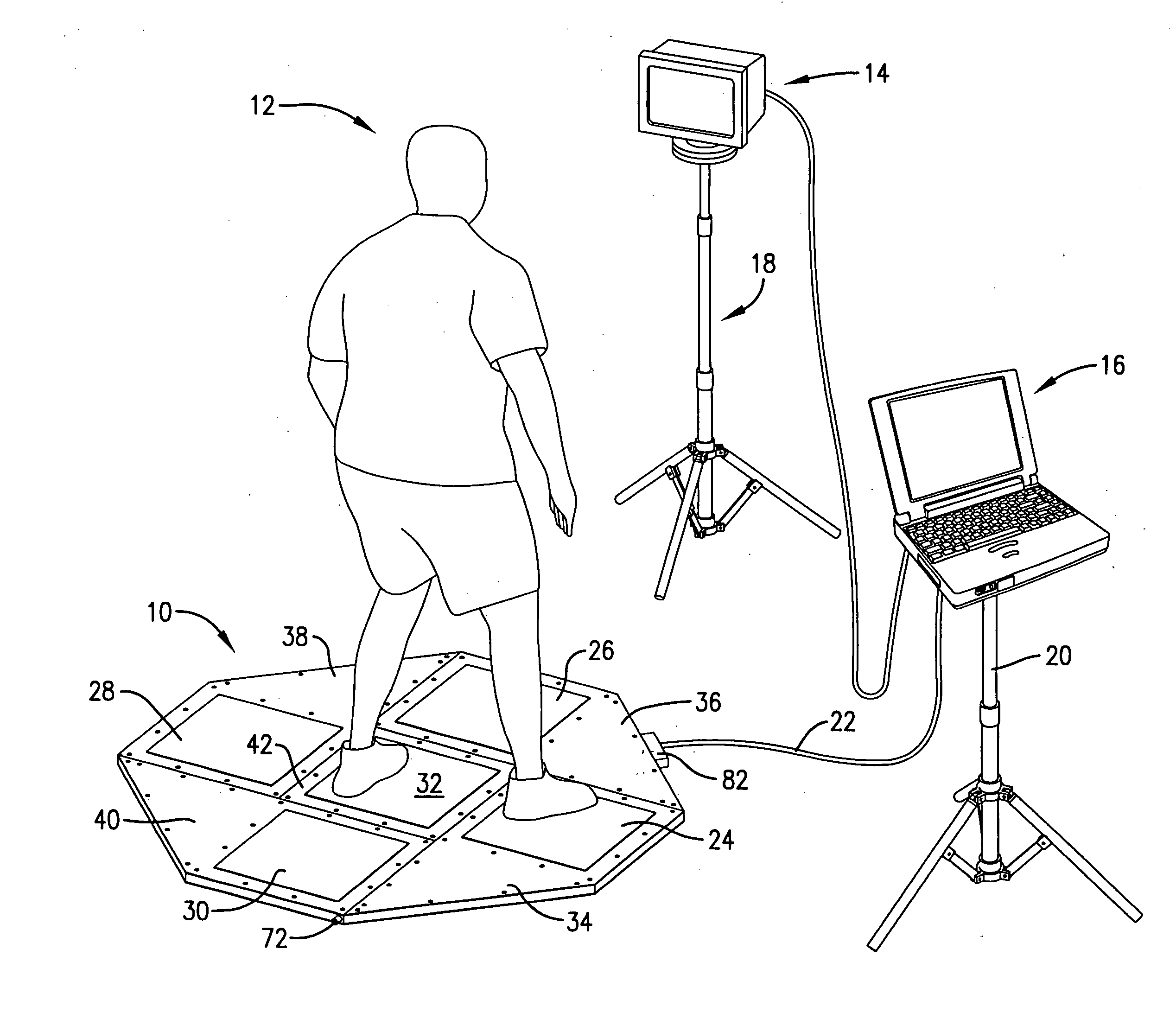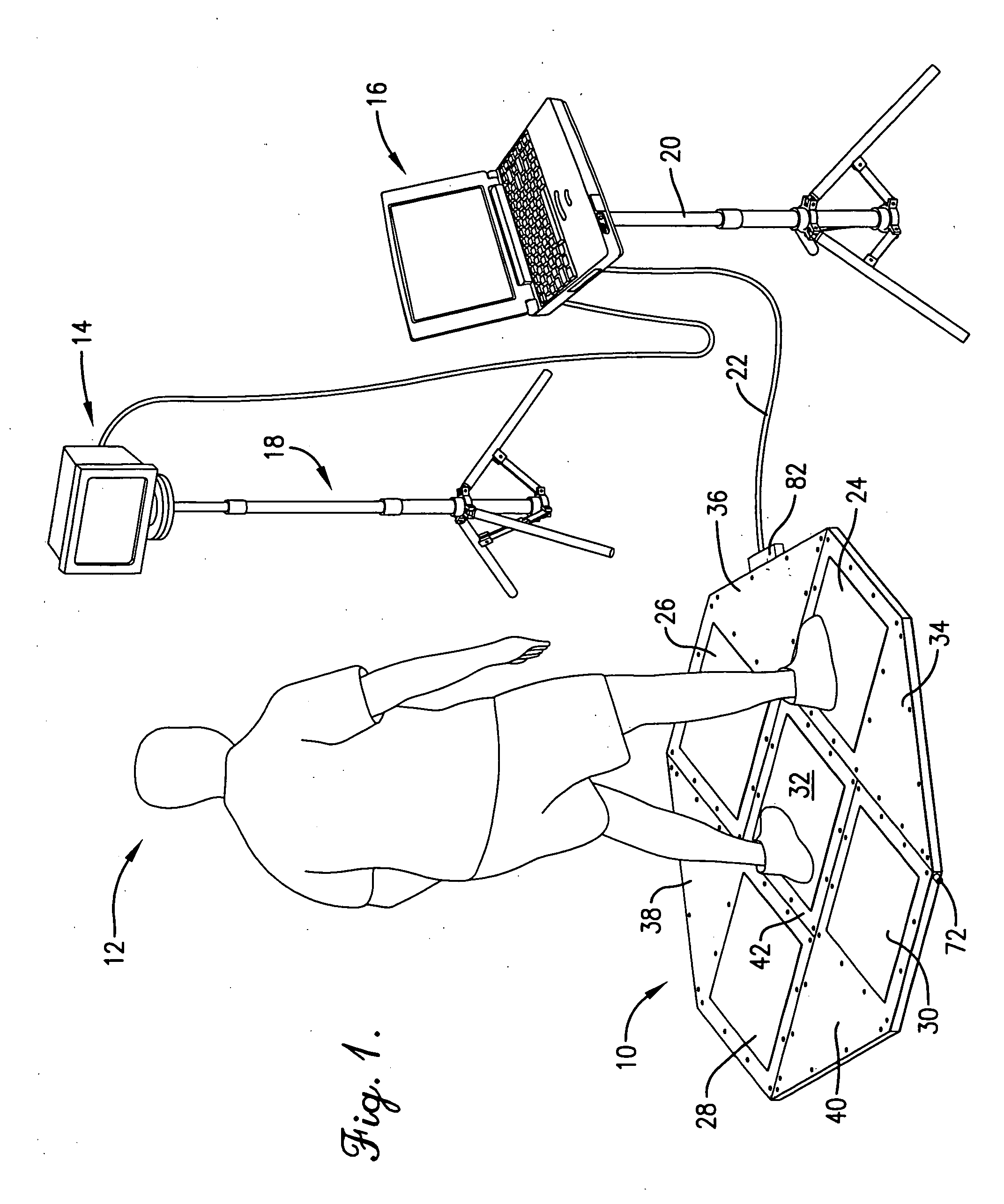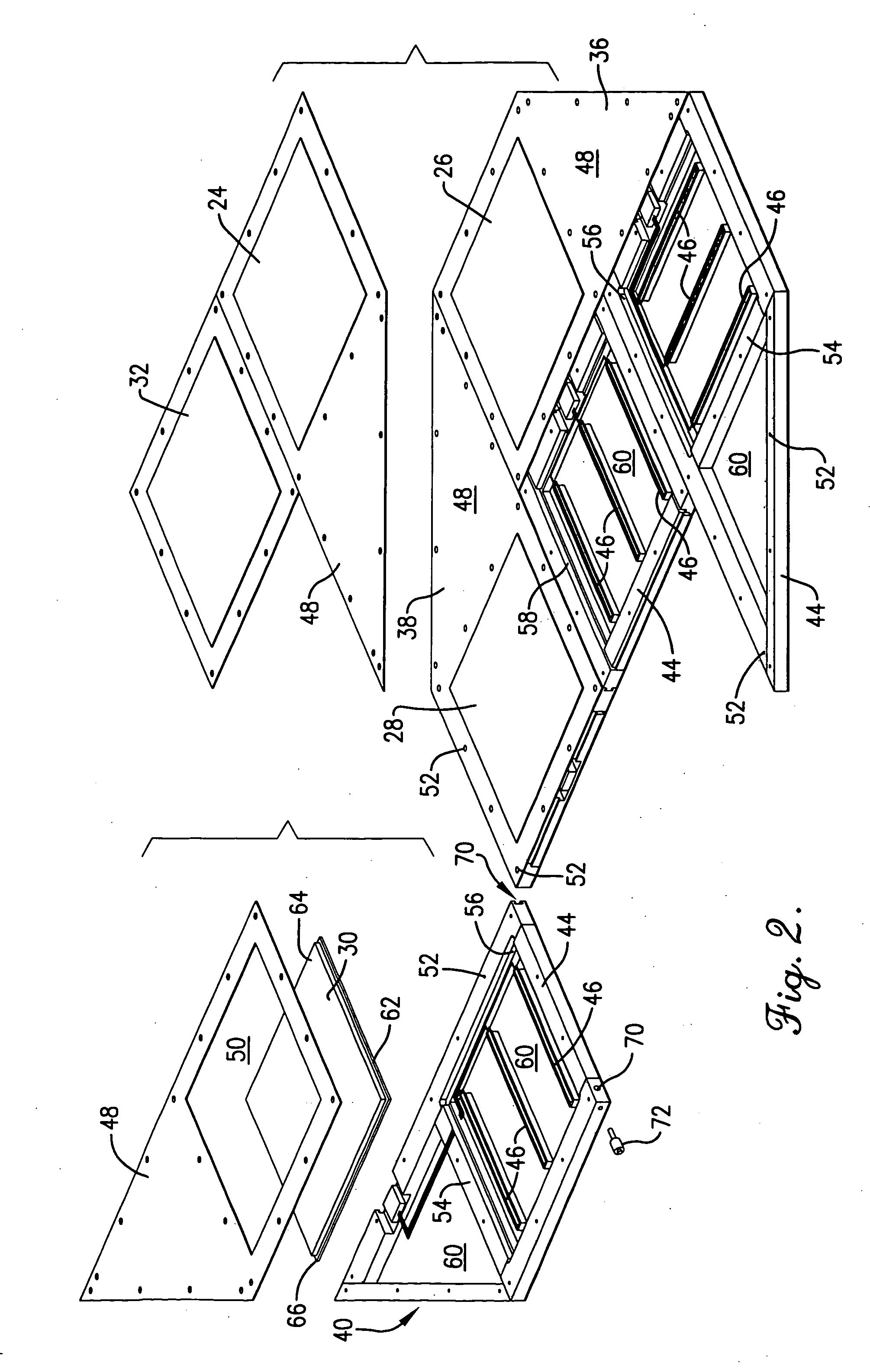Method and apparatus for oculomotor performance testing
a technology for oculomotors and ocular motors, applied in diagnostic recording/measuring, instruments, applications, etc., can solve problems such as error distorting actual, device deficiency in many respects, and device inability to record and/or compare differences between the time it took to move in any one specific direction and any other specific direction, so as to increase the stability of the accessory, increase the movement area, and increase the effect of movement area
- Summary
- Abstract
- Description
- Claims
- Application Information
AI Technical Summary
Benefits of technology
Problems solved by technology
Method used
Image
Examples
Embodiment Construction
[0044] The following description sets forth preferred embodiments of the present invention. It is to be understood, however, that this description is provided by way of illustration and nothing therein should be taken as a limitation upon the overall scope of the invention.
[0045] Turning now to the drawings, a preferred oculomotor testing device 10 is illustrated in FIG. 1. A test subject 12 is standing upon the device 10 facing a monitor 14 which is electrically connected to a computing device 16 in the form of a portable computer. Monitor 14 and computing device 16 are positioned atop respective stands 18, 20. Oculomotor testing device 10 is in the shape of an octagon and is also electrically connected to computing device 16 through cord 22. Testing device 10 presents four perimeter pads 24, 26, 28, 30, surrounding a central pad 32. Pads 24, 26, 28, 30, 32 can be of any shape and size and one preferred shape is square.
[0046] As shown by FIG. 2, each respective perimeter pad sits...
PUM
 Login to View More
Login to View More Abstract
Description
Claims
Application Information
 Login to View More
Login to View More - R&D
- Intellectual Property
- Life Sciences
- Materials
- Tech Scout
- Unparalleled Data Quality
- Higher Quality Content
- 60% Fewer Hallucinations
Browse by: Latest US Patents, China's latest patents, Technical Efficacy Thesaurus, Application Domain, Technology Topic, Popular Technical Reports.
© 2025 PatSnap. All rights reserved.Legal|Privacy policy|Modern Slavery Act Transparency Statement|Sitemap|About US| Contact US: help@patsnap.com



